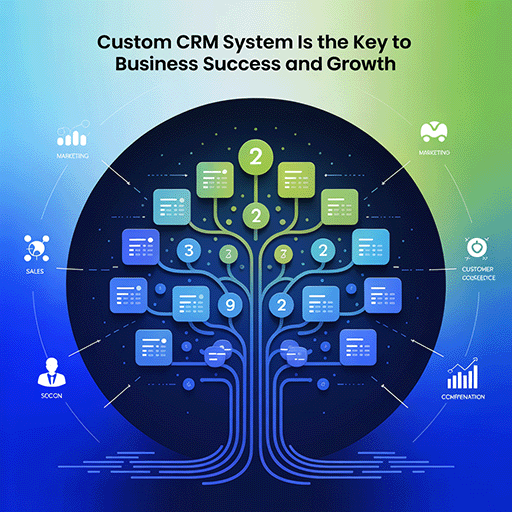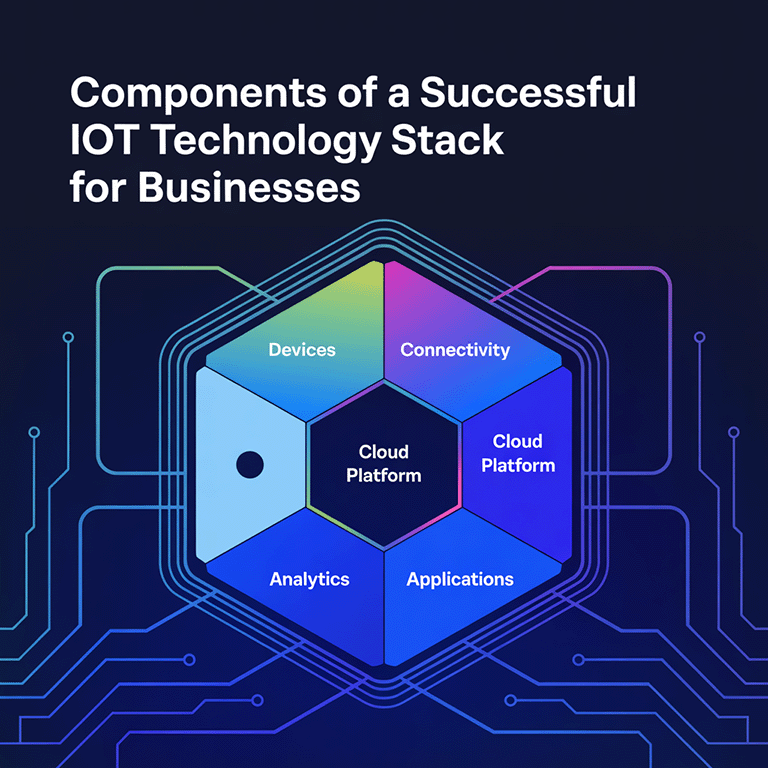Artificial Intelligence (AI) has transformed the operations of surveillance systems, making it possible for these devices to identify more opportunities for protection and supervision than ever before. Utilizing complicated algorithms and methods for learning patterns, security tools have become more proficient and effective.
A closed-circuit television (CCTV) surveillance system combines equipment that involves recording, monitoring, and analyzing activities and settings for security purposes and management actions. These systems are usually used to prevent crimes – such as theft or assault – by providing evidence, maintaining public order, or enabling efficient management of premises. They are based on various technologies, such as cameras, sensors, and programs to monitor certain places or actions.
Let’s examine how artificial intelligence is helping to strengthen security systems, making them safer and paving the way for a brighter tomorrow.
Role of AI in Surveillance and Security
AI plays a more significant role in security and surveillance, improving other security measures. The benefits of using AI in this field include increased accuracy, efficiency, and real-time threat detection. Because of its transformative impact and potential capabilities, the global surveillance industry is now moving towards more sophisticated AI technology.
Among the AI applications in security and surveillance are intelligent video analytics, face recognition, asset monitoring, task automation, predictive analytics, and biometric identification. These help detect, monitor, and respond to security threats more precisely and efficiently. AI and security technologies work together to strengthen threat detection systems, enhancing real-time responses to potential risks.
Intelligent video analytics makes real-time unusual activity detection possible, reducing the need for continuous human observation. Smart face recognition improves identification accuracy within diverse environments, thereby enhancing access control and investigation processes. Asset control devices (ACDs), together with task automation, make everyday operations more seamless while maintaining round-the-clock oversight that minimizes human errors.
The McKinsey Global AI Surveillance Camera Market Research Report documents the major milestones and market expansion of AI-based security cameras. Specialized network IP cameras with additional advanced analytical features such as vehicle detection, person detection, face detection, traffic counting, people counting, and license plate recognition (LPR) can perform these tasks.
According to a report by the GMI, the global AI surveillance market was valued at $5.5 billion in 2023. The market is anticipated to hit $83.3 billion by 2028, and the report indicates a massive 9.2% compounded annual growth rate (CAGR). This is primarily due to the higher uptake of the technology in surveillance operations that require security and data analysis capabilities.
Surveillance Systems and Main Functions
Surveillance systems have numerous critical roles, which include:
- Deterrence of criminal behavior: The system aims to intimidate criminals from involving themselves in any crime. Equally, potential offenders are deterred due to the knowledge that someone will always be watching them.
- Evidence Collection: After a crime has occurred, the footage is crucial in law enforcement and legal proceedings, mainly as evidence. It can be used to identify suspects, understand the sequence of events, and verify alibis.
- Public Safety: These types of surveillance systems are found on streets, in parks, and in subway stations, all aimed at ensuring that people are protected from any kind of danger by watching over them, hence taking immediate actions at any sign of risk they may come across during their patrols across different locations.
- Operational Efficiency: Businesses can monitor operations through surveillance systems, ensuring that they adhere to protocols for optimum productivity. They can, for example, monitor employee behavior, handle customer interaction, or oversee production lines.
- Remote Monitoring: Advanced technology has enabled modern surveillance systems to be accessed remotely, allowing individuals or companies to watch over their properties regardless of location using internet-enabled devices from anywhere globally.
- Access Control: In most cases, access controls are combined with building entrance and exit control systems for surveillance purposes. These systems boost protection measures by ensuring that only authorized persons can access specific parts of the premises.
Types of Surveillance Systems
Various surveillance systems perform different tasks and purposes.
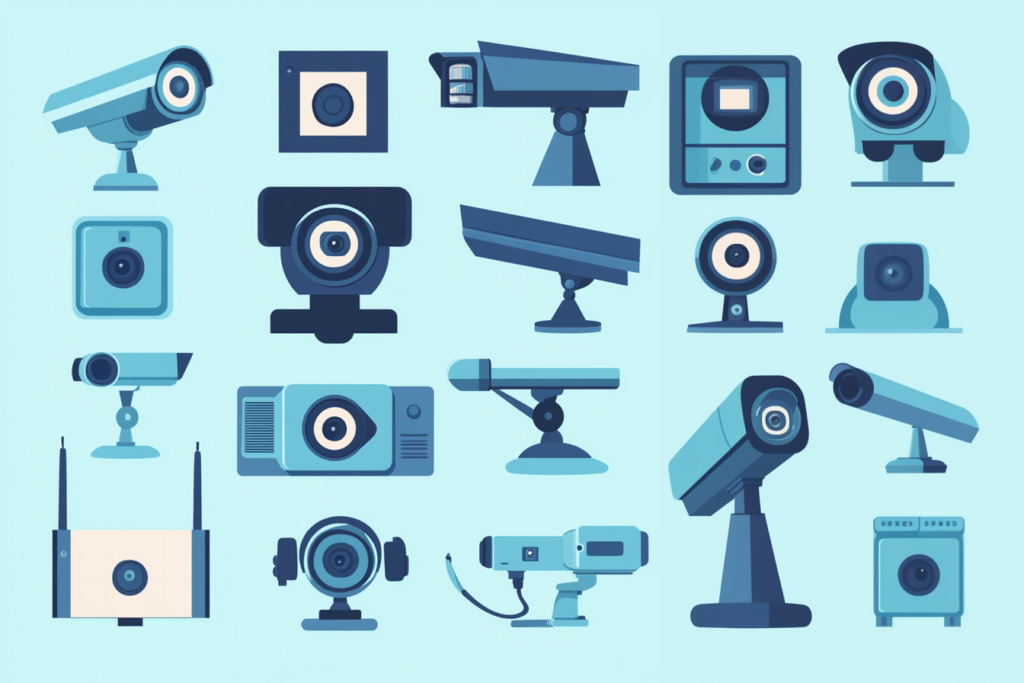
These are the most prevalent ones:
-
Closed-circuit television (CCTV): CCTV systems use analog cameras connected to a central recording device using coaxial cables. This system has been used to continuously monitor and record banks, stores, and public spaces in fixed locations. Although CCTV is known for being reliable and easy to set up, it cannot be compared to modern digital systems in terms of flexibility or advanced features. Find more examples of AI in banking in our blog.
-
IP Cameras: An IP camera is a digital camera that sends video information over a network. Resolution is greater with IP cameras compared with regular CCTV, and image quality is also improved. Some additional functions, like facial recognition, motion detection, or access from outside locations, can also be found there. Homeowners and businesspeople have adopted these devices for various purposes.
-
Access Control Systems: Security solutions that combine access control systems with security cameras allow for comprehensive monitoring of entrances and exits in a building. Technical equipment such as swipe cards, fingerprint readers, and smartphones, among others, achieve this.
-
Wireless Surveillance Systems: This is the only way these systems transmit video data. The wireless technology behind these cameras allows for installing and positioning webcams anywhere. They are accommodating in areas where cabling is impossible or impracticable over Ethernet network cables. Conversely, radios tend to interfere with other devices and require high-level network availability.
-
Digital Video Recorders (DVRs) and Network Video Recorders (NVRs): NVRs and DVRs capture footage from security cameras and keep it on tape. NVRs are designed for IP cameras, while DVRs are meant for analog CCTV. Each recorder model has different storage options, playback, and remote control alternatives.
-
Cloud-Based Surveillance: Systems located in the cloud store video material in remote servers, meaning data can be easily accessed, shared, and managed. This eliminates any form of storage device at any location, saving hardware costs while facilitating more security due to encryption mechanisms that are used both during transit periods and when kept at rest.
Integration of AI with Surveillance Systems
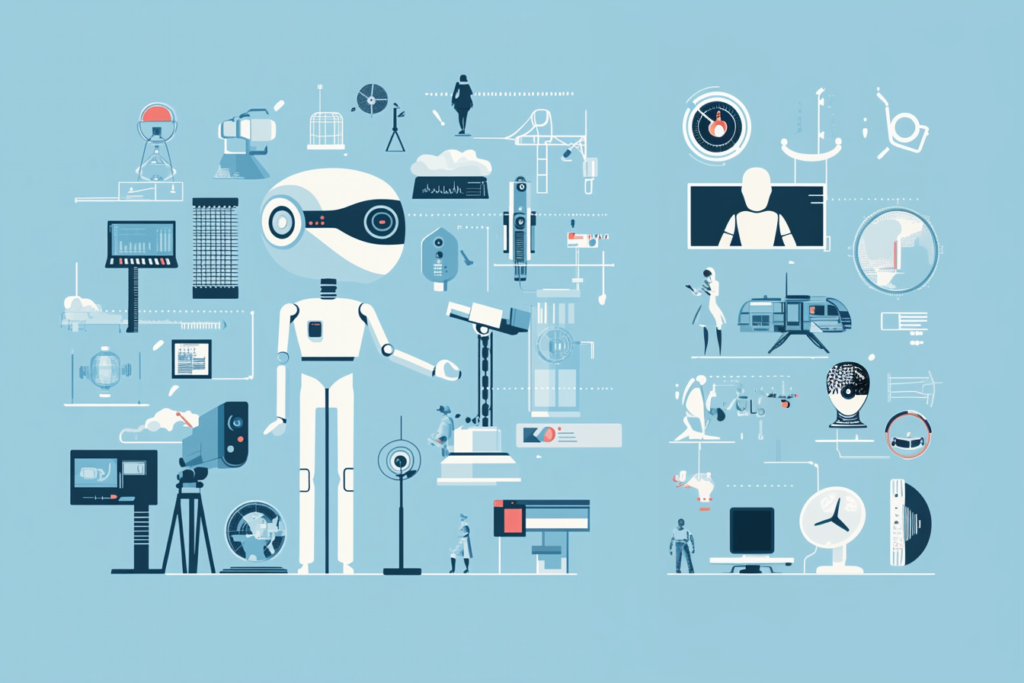
The integration of AI and surveillance is mostly done in the following ways:
-
Cameras and Sensors: Cameras have AI algorithms and sensors within them to improve data multitasking. These smart cameras can focus by themselves, follow things up, and optimize the quality of images based on the kind of scene they detect.
-
Video Management Software (VMS): An AI-based video management system (VMS) verifies patterns in videos, both live and recorded, to sound an alert on potentially troubling activities.
-
Cloud-Based Solutions: With cloud-based solutions, one can implement the capacity of AI in their web apps, make use of scalable computing and storage capacities, and optimize big data processing, which is a great deal more efficient. This would mean complex analysis-based manipulation of information as well as integration across various databases.
-
Edge Computing: Artificial intelligence algorithms are carried out at the edge, that is, on the device itself or very close to where the data originates. As a result, less delay is experienced, and less bandwidth is utilized, considering that information is assessed nearby.
Key Features of AI-Powered Surveillance
-
Facial Recognition: Facial recognition systems powered by AI instantly identify subjects by comparing current images with archived ones stored permanently in memory. These systems are used for access control assessments, crowd surveillance against known threats, and tracing missing individuals.
-
Behavior Analysis and Anomaly Detection: AI algorithms can observe and examine human behavior to identify unusual or suspicious activities. These may include staying in one place longer than expected, suddenly creating crowds, and moving swiftly, among other behaviors that could raise security concerns.
-
Object and Motion Detection: AI effectively identifies vehicles, wild animals, and parcels. Therefore, it helps block unauthorized entry, spot forgotten items, and trace certain goals.
Benefits of Artificial Intelligence in Surveillance
-
Enhanced Precision and Efficiency: AI systems consistently and accurately analyze surveillance footage to reduce the possibility of human error while also reducing the human operator’s workload through the fast processing of enormous data.
-
Proactive Threat Detection: AI systems can predict potential threats and notify authorities before they escalate. This proactive measure is geared towards stopping incidents rather than just reacting to them.
-
Cost Savings: AI automates surveillance tasks and reduces the need for overreliance on human surveillance. Again, an intelligent way of processing data helps prevent the use of more hardware.
-
Scalability: The adaptable nature of AI solutions allows them to easily undergo massive scaling that involves interconnection with several surveillance technologies. This flexibility will enable them to be used in diverse settings, ranging from small-scale enterprises to massive public areas.
-
Improved Data Utilization: AI makes analyzing surveillance data and interpreting untapped human insights possible. Therefore, these data can enhance security strategies, optimize operations, and improve overall safety.
Applications of AI-Enabled Security Systems
Artificial intelligence considerably ameliorates surveillance systems’ abilities and efficiency within different industries.
The following are the main areas of application for AI in surveillance:
Improved Object Recognition and Tracking
Advanced computer vision algorithms enable AI to significantly enhance object recognition and tracking in surveillance systems. By contrast, traditional systems usually depend on motion detection and manual monitoring, thus causing object detection errors and multiple false alarms due to irrelevant movements like passing vehicles or swaying trees.

By utilizing AI-based cameras, it is possible to achieve a higher degree of accuracy when differentiating objects from animals and people, thus decreasing mistakes in their identification while simultaneously allowing for better supervision of such activities. And unlike most human beings who are unable to keep their full attention on cameras for more than 12 minutes, thereby missing some instances, robots ensure non-stop observance.
Real-Time Analysis and Proactive Monitoring
AI surveillance transcends passive recording by allowing real-time analysis. Machine learning algorithms allow for the training of AI-driven surveillance cameras, which can then recognize particular items like weapons or unattended bags, among others. Thus, it permits proactive monitoring; security staff are alerted whenever an incident occurs, preventing any damage that might have resulted from insecurity.
For example, in a public place, an AI-based surveillance camera will easily recognize an unattended bag and inform security guards in that area, alleviating the chances of insecurity.
Facial Recognition
AI used in surveillance is very powerful in recognizing faces. It is time-consuming for conventional systems that depend on manual identification, which leads to errors. Security and law enforcement agencies have found a useful tool in swift and precise facial recognition by AI algorithms. The significance of this is more so in scenarios where there is a need for access control, including government buildings, airports, financial institutions, and corporate offices.
Predictive Analytics and Anomaly Detection
Artificial Intelligence Surveillance Systems with machine learning algorithms are designed to anticipate security breaches through predictive analytics based on past events that happened up to this point where humans have such knowledge. In addition, AI-powered cameras can recognize common human behavior like walking, sitting on a bench, or standing still in some given place. An alert is then triggered by these intelligent cameras whenever any unusual movement is detected, thus prompting further examination by the respective authorities before it gets out of hand. This strategy has helped improve safety within organizations by identifying early indicators of danger, thereby preventing various risks.
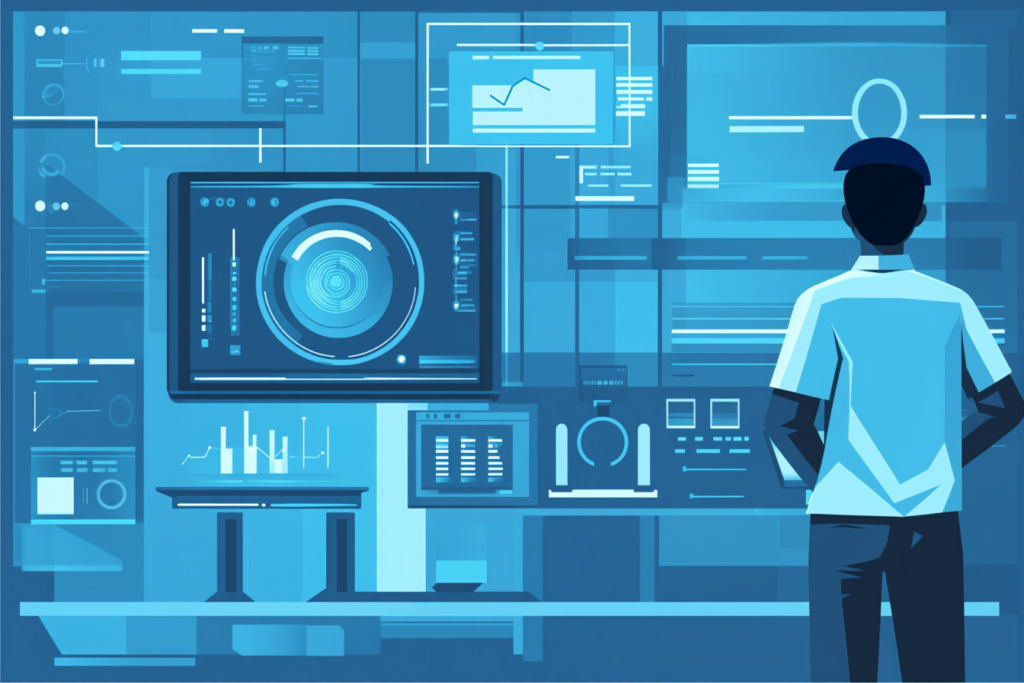
The use of predictive analytics is particularly important in places with many people, like airports and train stations, where it can be difficult to spot abnormal behavior patterns. By utilizing cameras powered by AI, it is possible to prevent suspicious activities that can lead to offenses such as theft and damage of property, among other things, including terrorism.
AI Security Solutions for Shopping Stores
Retail centers confront a perpetual menace of shoplifting and larceny. Enhanced security machines that rely on artificial intelligence (AI) shield merchants from losing property through theft while they are doing business by monitoring any signs of unauthorized access and promptly initiating an alert situation.
It works by tracking the number of visitors, customer inquiries made during visits, and conversions to purchases. It also knows what types of products individuals are interested in buying most often and when they need restocking. This information becomes essential when preparing the best places to place commodities intended for sale, enhancing clients’ satisfaction levels and increasing robustness.
Faster Data Extraction in Emergencies
Collecting data during emergencies is challenging because of the chaos associated with such situations, including riots and terrorist attacks. AI security systems hasten the process of data gathering in times of crisis and inevitably make it very swift and effective. Moreover, the inclusion of AI in security and surveillance serves to coordinate investigators better, thus boosting the efficiency of general emergency response mechanisms.
Fire and Smoke Detection
Surveillance cameras embedded with AI can identify fire or smoke signs in real time, a critical factor in early fire detection in various places, such as industrial facilities, public buildings, or even forests. At the same time, this specific feature helps save both human beings and property that could have been destroyed during such incidents.
Elderly Care Monitoring
AI-assisted surveillance is used in healthcare and homes to monitor the health of older people. It can do this by noticing when someone slips and falls, acts strangely, gets hurt somehow, or otherwise appears uneasy before sending any warnings directly to those caring for them for timely action to ensure they remain okay at all times. It reduces patient welfare concerns by offering preventative measures for a more secure environment.
Efficient Traffic Management
Smart traffic management is enabled by surveillance cameras driven by artificial intelligence. These cameras analyze real-time traffic patterns through sophisticated computer vision algorithms, which also optimize signal timings and reveal points for congestion. To reduce commuting times, the system continuously changes traffic signals, leading to a smoother flow of vehicles and minimizing congestion. AI and transportation technologies work together to further enhance efficiency by providing dynamic solutions for urban mobility. This transformative technology, called AI, also improves urban mobility at large through effective traffic management.
Real-World Examples of Companies Using AI Surveillance
Many businesses and environments in different fields have successfully employed AI in their surveillance systems to substantially enhance online safety, operating efficacy, and situational awareness.
The following are some examples:
Amazon Go
The Just Walk Out Technology developed by Amazon allows a cashier-less shopping experience through automatic billing to customers for items they choose. AI-powered surveillance cameras and sensors track customers’ movements and purchases in the 180-square-foot mini-market called Amazon Go.
Tesla
Tesla uses AI to achieve higher levels of security in cars. To be more specific, every vehicle manufactured by Tesla has a complex security apparatus that consists of cameras and sensors within it. With these instruments, any car can recognize whenever there is an attempt at breaking into or acting suspiciously when unattended, hence raising the alarm and notifying its owner.
Google Nest
Google Nest incorporates artificial intelligence in its smart home security systems. These cameras differentiate between regular occurrences and emerging risks before alerting homeowners and facilitating remote monitoring.
Changi Airport
Changi Airport in Singapore uses AI-powered smart video analytics to improve passenger security and safety. The software optimizes crowd management by identifying strange activities and detecting unauthorized entries.
IBM
IBM uses AI in its surveillance solutions to improve security and operational efficiency in different fields. Thanks to the company’s systems, security is enhanced with advanced analytics and threat detection functions.
Hikvision
Hikvision uses artificial intelligence to provide cutting-edge AI video surveillance solutions. These solutions are tailored for different purposes, such as public safety or commercial protection, and they guarantee better image recognition functionalities and monitoring capacities.
Dahua Technology
Dahua Technology Integrates Artificial Intelligence in its Surveillance Systems to Improve Security Measures on its Platforms. Their technology includes intelligent video analysis, facial recognition, and real-time alerts to enhance operational efficiency and safety.
Axis Communications
Axis Communications has integrated artificial intelligence (AI) into its various surveillance equipment to provide more advanced video analytics capabilities. Their products come with systems supporting functions such as detecting movements or recognizing actions, thereby enabling enhanced safety and supervision tasks.
NVIDIA
NVIDIA powers advanced surveillance systems using AI and GPU technology. The company’s offerings enable faster security features and efficiency through real-time video processing and analysis.
Bosch Security Systems
Bosch Security Systems uses artificial intelligence to provide intelligent surveillance solutions. These designs have certain components, such as automated alerts, to enable them to enhance security matters as well as operational efficiency.
AnyVision
AnyVision uses AI in its facial recognition and surveillance projects. Therefore, this warrants increased security across a range of applications, as it allows for immediate recognition of people and objects.
SenseTime
AI has been integrated into SenseTime’s surveillance systems for advanced image recognition and analysis, as well as facial recognition and behavior analysis, to improve security measures.
BriefCam
BriefCam uses artificial intelligence in video analytics to enable quick searching and reviewing of surveillance videos. It can offer deep and actionable analysis, improving one’s sense of what is happening around them while keeping one safer.
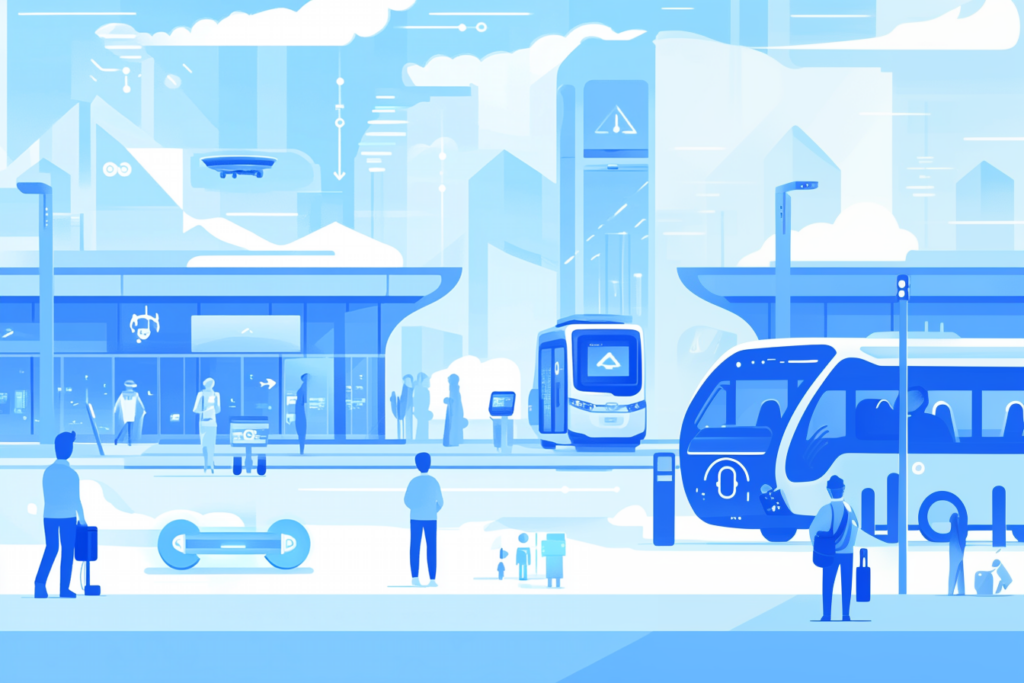
The Global Expansion of AI Surveillance
Indeed, Carnegie’s new index shows how other nations are currently grappling with the issue of deploying AI-powered surveillance systems on their populations using different methods.
Key Findings
Global Spread of AI Surveillance
AI surveillance systems are quickly multiplying globally and are now being used in at least 75 of the 176 countries.
Types of AI surveillance systems:
-
Platforms for smart cities and safe cities are available in 56 countries
-
The use of facial recognition systems has been noted in 64 countries
-
Smart policing is present in 52 countries
AI-Powered Chinese Surveillance Technology
-
Currently, 63 countries use AI surveillance technology from Chinese firms like Huawei, Hikvision, Dahua, and ZTE.
-
36 are also part of China’s Belt and Road Initiative (BRI).
-
More than 50 countries have plugged into Huawei’s AI surveillance technology.
-
In 14 nations, NEC Corporation from Japan is the second largest non-Chinese supplier.
-
To motivate purchases, Chinese technology solutions usually include soft loans, especially for countries like Kenya, Laos, Mongolia, Uganda, and Uzbekistan.
Role of U.S. Companies
U.S. companies leverage AI technology to export surveillance technology to 32 nations worldwide.
Some of the big companies in America that supply these critical materials are:
-
IBM: 11 countries
-
Palantir: 9 countries
-
Cisco: 6 countries
Other International Suppliers
-
Companies from France, Germany, Israel, and Japan also contribute to AI surveillance technology.
-
There is no adequate monitoring or control of the spread of this technology in democratic countries.
Usage of AI Surveillance in Democracies vs. Autocracies
51% of advanced democracies use AI surveillance systems.
In comparison:
-
The figure is 37% for closed autocratic countries.
-
The distribution is 41% for countries with competitive autocratic/electoral systems.
-
The percentage stands at 41 for illiberal democracies/electoral democracies.
-
Democratic governments use AI surveillance to carry out various tasks, such as border control, arresting criminals, listening to citizens, and countering terrorism.
-
The quality of governance, rather than the type of government itself, is the most central element that may lead to misuse of AI surveillance technology.
Increasing Global Adoption
-
AI surveillance is increasingly being used worldwide, and 75 countries (corresponding to 43% of countries surveyed) are using it.
-
Chinese firms utilizing AI surveillance were found in 18 of the 65 countries included in the “Freedom on the Net 2018” report, while an increase to 47 nations was noted the following year.
Cost of Implementing AI in Traditional Surveillance Systems
The expense of using AI on regular surveillance systems can fluctuate widely. This is due to different reasons, such as software development, hardware integrations, deployment scale, and integration complexity.
Below is an outline of some typical costs:
1. Basic Integration
$25,000 to $100,000 is the typical cost range for basic AI-powered surveillance software. This includes the basic AI features and system networking.
2. Advanced Integration
More complex deployments can cost anywhere from $100,000 to $300,000 or even more due to sophisticated software capabilities and extensive system integration. Improved analytics, high-resolution cameras, and extra support services are among the features that come as standard in these cases. You can use our free cost calculator to get the most accurate pricing estimate. Just answer a few quick questions about your project in the quiz, and we’ll provide you with a tailored estimate
How LITSLINK Boosts Surveillance Systems with AI
Imagine a world where your surveillance system thinks and adapts. LITSLINK makes this a reality. Our AI solutions transform traditional security into intelligent guardians. Facial recognition, object detection, and behavior analysis are just a few software we use in our solutions.
Are you concerned about seamless integration? We’ve got you covered. Worried about ethical considerations? We prioritize them. Need proven expertise? Our 350+ tech experts in different sectors have delivered 80+ successful projects, and are always ready to handle new projects regardless of their complexity.
We help to upgrade and revolutionize your surveillance and unlock AI’s full potential in your security strategy. Partner with LITSLINK today to craft your intelligent, secure future together.
Shortcomings in Traditional Surveillance Systems
Before AI-powered security systems, responses to criminal activities depended heavily on looking into cases that had already happened.
There was no way around it, mainly due to three key limitations:
1. Manual Surveillance Limitations
Monitoring video footage manually has shortcomings. Operators fatigue out, lose concentration, and miss vital aspects. As a result, their ability to recognize and act on possible risks decreases rapidly.
2. Inadequate Real-Time Monitoring Technologies
Previous surveillance technologies could not do all-encompassing real-time tracking and monitoring. The result was a hindrance to proactive security measures and slow incident response. Although the conventional method of criminal investigation often uses CCTV camera technology, the contemporary approach employs more sophisticated AI apparatus. These companies invested a lot of money in improving their surveillance systems during COVID-19 because they saw how useful AI was to them. But now, there are new possibilities that would have been impossible without the use of modern AI innovations.
3. Suspicious Movement Detection
Artificial intelligence (AI) systems detect uncommon behaviors or movements so that intervention and prevention measures can be applied as soon as possible.
Tips on How to Better Adopt AI
Utilizing AI in surveillance is critical to achieving peak efficiency and effectiveness. However, this move necessitates careful thought to achieve the desired outcome.
Here are some guidelines:
1. Define Clear Objectives
-
Identify Needs: Clearly define what you aim to achieve by using AI in surveillance, such as enhancing security, monitoring traffic, or identifying cases of insecurity.
-
Set Goals: Set measurable goals to help in the AI adoption process and measure its effectiveness
2. Ensure Data Quality
-
Gather Quality Data: Any AI algorithm requires high-quality, pertinent data. Ensure it is high-quality, suitable, and timely.
-
Data Privacy: Conduct strong data protection to conform to privacy regulations and safeguard sensitive information.
3. Choose the Right AI Solution
-
Assess Technologies: Evaluate numerous AI technologies and solutions to locate the one that best meets your particular requirements.
-
Vendor Evaluation: Select reputable vendors with proven track records who can provide support services.
4. Integrate with Existing Systems
-
Seamless Integration: Ensure the AI system blends perfectly with your surveillance system for smooth functioning.
-
Compatibility Checks: Ensure the artificial intelligence solution works with the current hardware and software.
5. Implement Ethical Guidelines
-
Bias Mitigation: Make certain that your AI system is developed to rival biases and be impartial as it dispenses judgments.
-
Transparency: Establishing trust with stakeholders requires that AI operations and decision-making processes be transparent to avoid confusion.
Wrapping Up
Artificial intelligence surveillance technology is a significant technological advance in security improvement, efficiency boost, and operation capability enhancement. AI tools employed by an organization can enable even more accurate monitoring and quicker incident spotting alongside intelligent analysis over large data sets. Reducing false positives and improving pattern recognition in decision-making processes are some aspects that AI adds to surveillance systems.
It is possible to completely change your security operations if you embrace AI-powered video surveillance applications, which offer better functionality than traditional systems that might not provide such insights. The future of surveillance now entirely depends on it—AI is not about what will happen but being in control to deter possible threats and ensure the safety required at all times.
Now is the right time for your company to understand how beneficial AI-powered solutions are if you have yet to delve into them. If implemented carefully and with good planning, AI can be a vital stakeholder in achieving your surveillance objectives and enhancing the entire site’s security.


